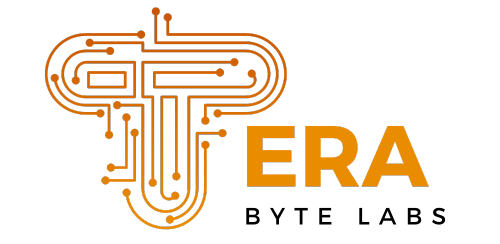
With the digital shift in tax administration, you’re likely seeking ways to streamline your tax processes. Bridging software for MTD is a game-changer, acting as a vital link between your current systems and the new digital requirements.
In this article, we’ll delve into the world of bridging software for MTD, exploring its benefits and how it can revolutionize your tax management. Whether you’re a seasoned tax professional or a business owner navigating MTD, this guide will provide you with the insights you need to make an informed decision.
Bridging Software for MTD
In the context of digitizing tax processes, bridging software for MTD represents a suite of tools. Its function remains central in bridging the gap between traditional methods of taxation and a digital approach – a key aspect in the government’s Making Tax Digital (MTD) initiative. It allows the seamless transfer of data from internal systems directly to HMRC, turning static data into dynamic, reportable content.
Characteristics of Bridging Software for MTD
 Bridging software for MTD encompasses several traits that make it vital in updating tax systems. Its key features include:
Bridging software for MTD encompasses several traits that make it vital in updating tax systems. Its key features include:
- Direct Data Transfer: It enables direct data conveyance from the spreadsheet to HM Revenue & Customs (HMRC). Examples encompass software from AbsoluteExcel VAT Filer and BTCSoftware.
- Data Transformation: It assists in transforming raw numbers into a smarter digital tax format, enhancing the accuracy and efficiency of tax reporting, as exemplified by tools such as QuickBooks and Xero.
- Compatibility: It functions alongside existing tax software or independently. An instance includes bridging tools from TaxCalc and Taxfiler.
- User-Friendly: It is designed to be used by individuals with limited technical knowledge. Such programs include Nomisma or VitalTax.
Why is Bridging Software for MTD Recognized?
The recognition of bridging software for MTD stems primarily from its ability to simplify taxation processes. As businesses adapt to the new MTD requirements, they are realizing the importance of digitization. Bridging software is acknowledged for:
- Compliance: It guarantees compliance with the new regulations placed by HMRC, saving companies from potential fines.
- Convenience: It provides a convenient and straightforward mechanism to submit tax information directly from in-house programs.
- Cost-effectiveness: It averts the need for significant investment in new tax systems – a cost-effective route to MTD compliance.
- Efficiency: It streamlines procedures, saving time spent on manual processes or data entry, and reducing the risk of errors.
As businesses and tax professionals continue to recognize the role of bridging software, its prevalence within the realm of digital taxation is only set to increase.
Evaluating the Features of Some Top-rated Bridging Software for MTD
To understand the potential of leading bridging software for MTD, a comprehensive evaluation of their prominent features becomes necessary. Respectively, you’ll explore the characteristics of Absolute Excel VAT Filer, BTCSoftware, Sage, and QuickBooks, picking apart their efficacy and relevance in practical applications.
Identification of Prominent Software Characteristics
 Distinct features set leading bridging software apart. For instance, Absolute Excel VAT Filer provides simplicity for users with an intuitive interface. Additionally, it offers compatibility with Microsoft Excel, facilitating easy data input and manipulation.
Distinct features set leading bridging software apart. For instance, Absolute Excel VAT Filer provides simplicity for users with an intuitive interface. Additionally, it offers compatibility with Microsoft Excel, facilitating easy data input and manipulation.
On the other hand, BTCSoftware boasts comprehensive MTD compliance capabilities. It features robust integration tools, and flexible reporting options, allowing users to directly submit VAT returns to HMRC.
Nevertheless, security is a strong suit for Sage with intense data protection measures complementing its easy-to-use dashboards. Furthermore, Sage offers integration with other accounting software, presenting a versatile solution for businesses of all sizes.
Lastly, QuickBooks stands out with its rich financial management features. It provides an array of tools for invoicing, expense tracking, and reporting. Equally important, QuickBooks features cloud-based operation, enabling seamless accessibility from multiple devices.
Efficacy and Relevance of Features in Practical Applications
In a practical context, these features substantially influence tax management efficiency and accuracy. Absolute Excel VAT Filer’s simplicity and compatibility make data entry and tax computations an uncomplicated task, promoting efficiency.
BTCSoftware’s comprehensive compliance features turn it into a go-to solution for businesses struggling with MTD compliance. It simplifies VAT return submission, eliminating potential tax errors.
Sage’s robust security measures provide assurance for businesses with concerns over data integrity. Moreover, its integration capabilities allow for harmonious operation with other systems, enhancing overall productivity.
Meanwhile, QuickBooks’s array of financial management tools complement its bridging software capabilities. Business owners enjoy a centralized management avenue, assuaging the complexities of financial handling.
In essence, each software presents unique capacities catering to different user needs. Therefore, an understanding of these features aids in identifying the suitable bridging software for your MTD needs.
Conclusion
Adopting bridging software for MTD isn’t just a necessity, it’s a strategic move that can elevate your tax management game. With a multitude of options at your disposal, you’re sure to find a software that fits your needs and budget. Embrace the change, and you’ll find that bridging software for MTD isn’t just about compliance—it’s about efficiency, accuracy, and staying ahead of the curve.

